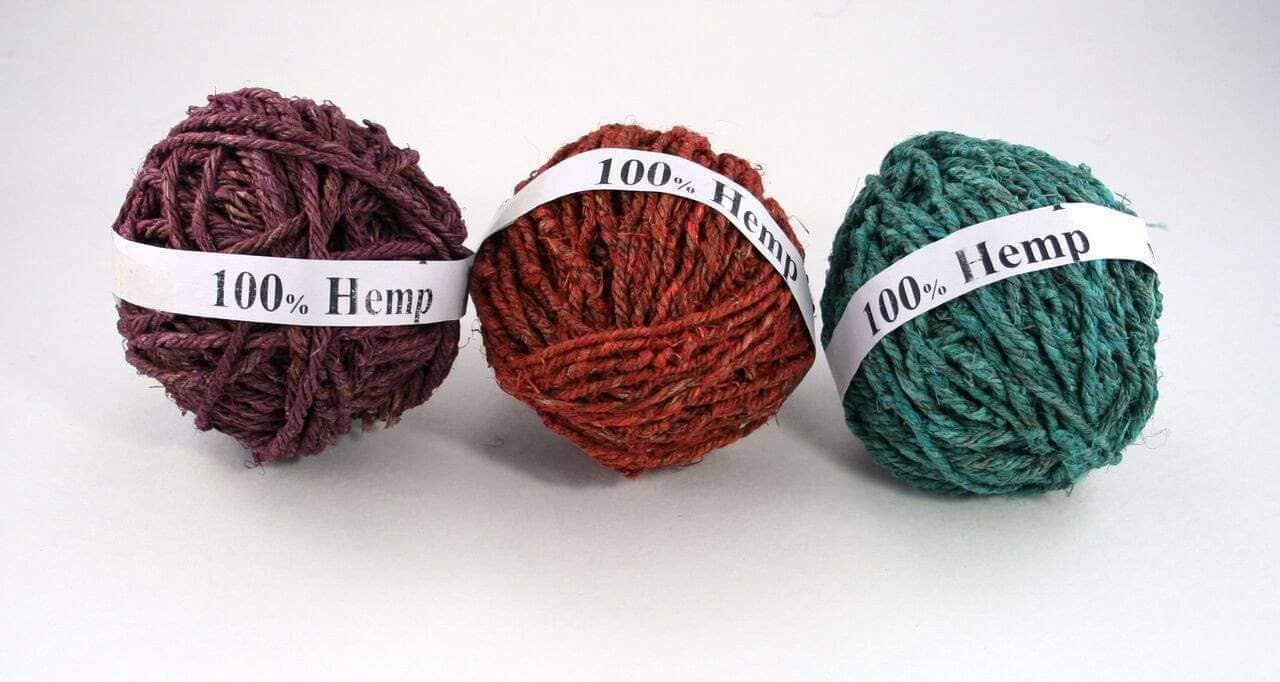
Hemp has been a main stay in the crafting market since the 1960's. Most commonly known for uses in macrame, but with the growing fiber industry. Industrial hemp can be made into many products including yarn, fabric, paper and so much more! The silver lining is that hemp is actually an extremely earth friendly crop! Here are a few ways hemp can help save the world:
Clean industry: Processing hemp fiber for paper, cloth and yarn does not require chlorine that produces dioxins as it does with wood or cotton fiber. Today, the paper industry uses mostly wood pulp and is the 3rd largest polluter. Switching to hemp fiber will make an immense improvement to our Earth.
Water - Saving: The hemp plant helps the water crisis the Earth is facing now, because it does not need much water to grow. Compared to the wood and cotton plantation, hemp requires much less water.
Land - Saving: 1 acre of usable hemp fiber is equal to the usable fiber of 4 acres of trees or 2 acres of cotton. Using hemp could save land cleared for agriculture means; hemp production could reduce the deforestation.
- Unlike many fabrics, clothing made from hemp does not contain any residual chemicals.
- Compared to other fabrics, hemp based fabrics can more effectively block the UV rays, even if the fabrics contain as little 50% hemp fiber.
Pretty amazing right? So are you asking your self what can you do with hemp? Let DGY be your go to for Hemp for your next knitting and crochet project! Here are a few project ideas that you can find on Darn Good Yarn:

Now, with all of these cool ideas are you curious about how exactly hemp yarn and other hemp product are made?
Step One: The crop is ready for harvesting high quality fiber when the plants begin to shed pollen; normally around mid-August in North America. Harvesting for seed occurs four to six weeks later. Fiber hemp is normally ready to harvest 70-90 days after seeding. A special machine called a Combine- which has rows of independent teeth and a chopper is used for collection. To harvest hemp for textiles, specialized cutting equipment is required.
Step Two: Once the crop is cut, the stalks are allowed to rett (removal of the pectin [binder] by natural exposure to the environment) in the field for four to six weeks—depending on the weather—to loosen the fibers. While the stalks lay in the field, most of the nutrients extracted by the plant are returned to the soil as the leaves decompose. The stalks are turned several times using a special machine for retting and then baled with hay harvesting equipment. Bales are stored in dry places, including sheds, barns, and other covered storage. The moisture content of hemp stalks should not exceed 15%. When planted for fiber, yields range from 2-6 short tons (1.8-5.4t) of dry stalks per acre, or from 3-5 short tons (2.7-4.5t) of baled hemp stalks per acre.
Step Three: To separate the woody core from the bast fiber, a sequence of rollers (breakers) or a hammermill is used. The bast fiber is then cleaned and carded to the desired core content and fineness, sometimes followed by cutting to size and baling. After cleaning and carding, secondary steps are often required. These include: matting- for the production of non-woven mats and fleeces, pulping- (the breakdown of fiber bundles by chemical and physical methods to produce fibers for paper making), and steam explosion- a chemical removal of the natural binders to produce a weavable fiber.
xoxoxo,
 Rewards
Rewards

